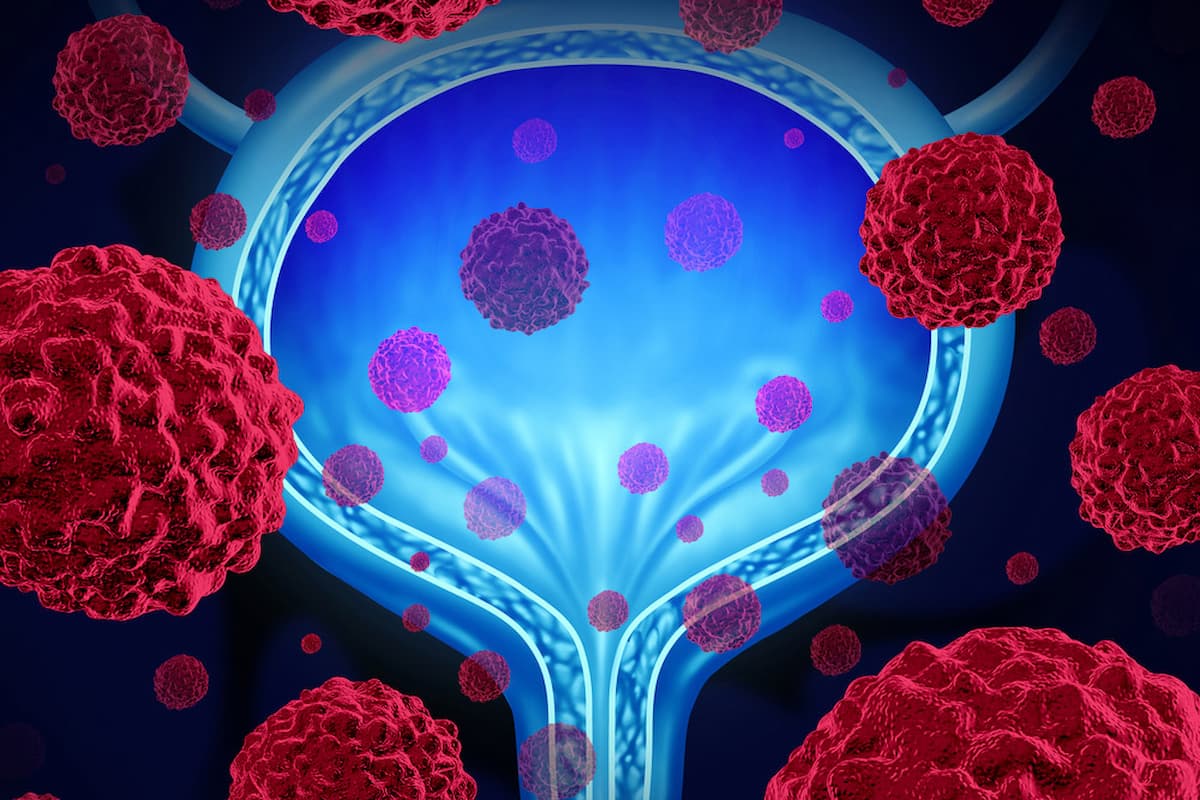Nivolumab/Ipilimumab Shows Improved Benefit in Urothelial Carcinoma
Nivolumab plus ipilimumab has shown a response benefit when given at an increased dose for those with metastatic urothelial carcinoma.
"We aimed to improve efficacy compared with nivolumab monotherapy, an approved second-line therapy for patients with [metastatic urothelial carcinoma]. Additionally, we intended to establish a standard to avoid excess toxic effects of dual immune checkpoint inhibition in responders to nivolumab monotherapy," according to the study authors.

Nivolumab (Opdivo) plus high-dose ipilimumab (Yervoy) as second-line treatment was shown to improve benefits in patients with metastatic urothelial carcinoma, according to results from the phase 2 TITAN-TCC trial (NCT03219775).
Two cohorts were analyzed in this trial. Cohort 1 included those who received previous platinum-based chemotherapy, and cohort 2 included patients who received second- or third-line treatment only. Patients were further separated into nivolumab induction in cohort 1 or second- or third-line therapy.
Regarding the TITAN-TCC approach, 48% (Clopper-Pearson exact 90% CI, 0.34-0.61; 1-sided P <.001) of patients in first-line cohort 1 achieved a response, and 7% had a complete response (CR). The disease control rate (DCR) was 57%. A response to treatment was observed in 27% of patients in later-line cohort 1 (Clopper-Pearson exact 90% CI, 0.17-0.40; 1-sided P = .15), 7% had a CR, and the DCR was 45%. In cohort 2, 33% (Clopper-Pearson exact 90% CI, 0.24-0.42; 1-sided P = .005) of patients responded, with 11% achieving a CR. The DCR was 42%.
“In TITAN-TCC, patients with [metastatic urothelial carcinoma] received a tailored approach with nivolumab induction [with or without] nivolumab [plus] ipilimumab as an immunotherapeutic boost with short-term nonresponse or later progression…We aimed to improve efficacy compared with nivolumab monotherapy, an approved second-line therapy for patients with [metastatic urothelial carcinoma]. Additionally, we intended to establish a standard to avoid excess toxic effects of dual immune checkpoint inhibition in responders to nivolumab monotherapy,” the study authors wrote.
A total of 169 patients were enrolled on this study. All patients received 4 doses of 240 mg of intravenous nivolumab every 2 weeks. Those without a response received nivolumab plus ipilimumab boost once every 3 weeks. Those in cohort 1 were given 2 doses of 3 mg/kg of nivolumab plus 1mg/kg of ipilimumab followed by 2 doses of 1 mg/kg of nivolumab plus 3 mg/kg of ipilimumab if no response occurred. In cohort 2, patients were given 2 to 4 doses of 1 of mg/kg nivolumab plus 3 mg/kg of ipilimumab.
Overall, 86 and 83 patients were enrolled in cohort 1 and cohort 2, respectively. Between both cohorts, 69.8% were male, and the median age was 68 years.
In cohort 1, the median time to follow-up was 10.4 months, 7.5 months for second- or third-line treatment, and 6.2 months for cohort 2. For survivors only, the median follow-up times were 14.4 months, 22.0 months, and 27.2 months, respectively. Of the patients receiving first-line therapy in cohort 1, 57% were given an immunotherapy boost, with 40% after week 8, and 17% for progression. In the later-line cohort, 68% of patients were given a dose, with 55% after week 8, and 14% for later progression. In cohort 2, 61% of patients were given an immunotherapy boost, with 53% after week 8, and 8% for later-line therapy.
The study’s planned end was reached by 5% of patients in first-line cohort 1, 2% in later-line cohort 1, and 10% in cohort 2.
In the first-line cohort 1, the median time to first response was 3.3 months (95% CI, 2.5-not estimable [NE]), not reached (95% CI, 4.5-NE) in the later-line cohort, and 19.5 months (95% CI, 4.8-NE) in cohort 2. The median duration of response was 9.1 months (95% CI, 4.1-NE), 18.7 months (95% CI, 4.2-40.0), and 18.0 months (95% CI, 6.9-34.9) in all cohorts, respectively.
In all cohorts, 62%, 77%, and 64% of patients had died. In first-line cohort 1, the median overall survival was 16.4 months (95% CI, 7.3-28.5); in the second- or third-line cohort, it was 8.3 months (95% CI, 5.3-19.3); and in cohort 2, it was 7.6 months (95% CI, 5.0-14.9). The median progression-free survival was 3.0 months (95% CI, 1.8-6.8), 1.9 months (95% CI, 1.7-5.8), and 1.9 months (95% CI, 1.8-3.2), respectively.
Nivolumab induction and responses to nivolumab plus ipilimumab boosts were also evaluated. At week 8 in the first-line cohort, 29% of patients responded to treatment, with 2% having a CR; the DCR was 48%. In the later-line settings for cohort 1, 23% of patients responded to treatment at week 8, and 2% achieved a CR. The DCR was 41%. In cohort 2, 20% of patients responded to treatment, with 2% achieving a CR. The DCR was 34%.
In the first-line setting, of those who received boosted treatment at week 8, 41% had improved their best response vs 8% in the second or third line and 23% in cohort 2. Of those who were given an immunotherapy boost in first-line cohort 1 after week 8 for progressive disease, 29% improved their best response compared with 33% in the later-line settings and 71% in cohort 2.
At least 1 adverse effect (AE) of any grade was observed in 99% of patients. Grade 3/4 treatment-related AEs (TRAEs) occurred in 37% of patients and were slightly more common in the first-line cohort. Treatment was delayed because of TRAEs in 37% of patients, and 27% discontinued.
Reference
Grimm MO, Schostak M, Grün CB, et al. Nivolumab + ipilimumab as immunotherapeutic boost in metastatic urothelial carcinoma: a nonrandomized clinical trial. JAMA Oncol. Published online May 9, 2024. doi:10.1001/jamaoncol.2024.0938
Newsletter
Stay up to date on recent advances in the multidisciplinary approach to cancer.